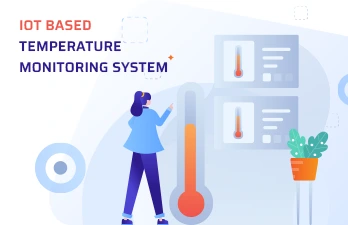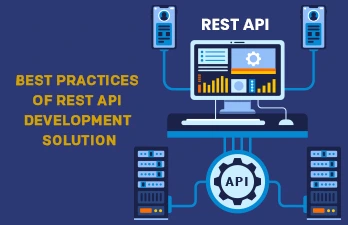By implementing the IoT solutions into the cold chain, organizations may connect consistently with each and every step in the logistical way by enabling cost-optimization advantages. Managers may toggle temperature settings as needed by reacting to the modifications in the local climate, damage to the packaging, human error, and unpredicted delays. There are many abilities of IoT that remarkably cut down the waste and damage, while improving the relationships of the distributors’ with their clients. The IoT is a great amalgamation of many networked devices and sensors, many of which have greatly executed along with the supply chain management (SCM).
Main reasons how IoT can transform Cold chain logistics

There are many reasons why IoT components are a good choice within the modern cold chains. Let’s discuss the main reasons how IoT can transform Cold chain logistics.
Food safety
Food wastage and contamination is always a problem in the logistics industry. In order to avoid these problems, including humidity sensors and network-connected temperature in the warehouse will let a clear monitoring of the trucks and trigger alerts, food containers, that can detect the replacement or damage of any products before they are offered to the customers. Shippers may recognize these problems by finding the causes of contamination as well as restoring them rapidly with the assistance of IoT devices.
Read more: How to Handle the Challenges of Cold Storage Warehouse with IoT Software
Flexibility
Compact integration is very essential in the cold chain logistics as a great control will make it simpler ensuring the temperatures are always correct. IoT sensors as well as applications may be placed in the vehicles as well as at the shipping facilities for generating logical tracking networks in the supply chains.
They have small sizes as well as similarities with various communications protocols like Wi-Fi, Bluetooth, cellular, ZigBee, etc. making them external for various requirements and environments. For example, logistics businesses can make use of a Near-field communications reader for reading the shipments temperatures wirelessly as they move from one site to another or using cellular to shift across many locations or sites when various other technologies will be widely acceptable for facility monitoring.
Precision
Human error is one of the main origins of the cold chain issue. Common issues may include:
- To set out a container which is temperature-sensitive in the morning but not shipping or dispatching it until the evening or even much later.
- Store products unnecessarily in the cold rooms, which may greatly damage some of the pharmaceuticals by making them drop greatly below a minimum that is bearable.
- Overpacking a package, in such a way that its cover may not close entirely as well as its contents may become open to the external temperatures that are usually high.
- Also, to leave too much space for frozen packs for moving around because they will melt which results in unequal cooling as well as poor stabilization.
The IoT will provide you much more clear, automated tracking in order to keep away any sort of issues and ensure requirements that are constantly met. Analytics which are collected from the embedded sensors may offer a precise picture that helps in maintaining shipments across the cold chain in such a way that their setups can be reproduced in other places.
Read more: IoT Based Automated Temperature Monitoring System
Efficiency
By using the IoT-enabled SCM, readings can be done even more effectively in the real-time by using the GPS location data and radio-frequency identification (RFID) tags. Temperature controls on their own can be achieved remotely or at least traceable continuously so that any other adjustments and rerouting can be possible to save a huge number of items as needed.
Implementing IoT into the cold chain business helps you to stay away from cooling containers, cold-packs, and into various other regions of the fleet for alerts and notifications, temperature visibility, real-time data access, descriptive and predictive real-time analytics, automated report generation, etc. GPS-powered asset tracking as well as the RFID systems will also help in making your cold chain even more effective and a great IoT solution must be capable of handling that for you.
IoT ecosystem for the cold chain supply systems
By using a smart IoT ecosystem for the cold chain supply systems, you may easily locate, analyze, and address almost all the potential errors efficiently and quickly. When temperature reaches above the range of threshold, the system will send alerts to the other stakeholders and drivers when there exists any issue.
IoT monitoring sensors may differentiate between having in transit as well as being stolen by triggering a ‘lockdown’ procedure for minimizing the theft. Pharmaceuticals, food, and various perishable products will reach the destination in a good condition in even the most typical situations. If the products are reserved in the warehouse, all the property managers may deal with the potential refrigeration or even move the products for conserving them.
Conclusion
IoT is a most advanced technology introducing many opportunities for the industries for their business expansion by linking sensors, embedded intelligence, human expertise, and advanced analytics. Nextbrain Technologies is the top IoT application development company providing customized IoT solutions for the logistics industry.




Saran
February 04, 2022 Author